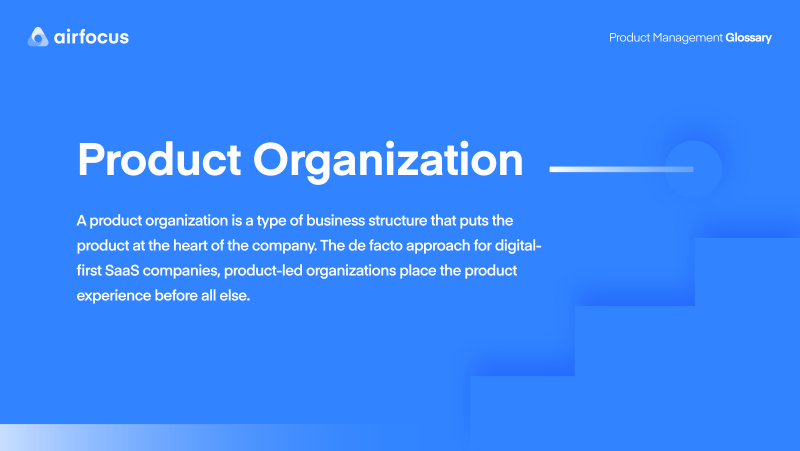Product Organization
What is a Product Organization?
Product Organization Definition
A product organization is a type of business structure that puts the product at the heart of the company. The de facto approach for digital-first SaaS companies, product-led organizations place the product experience before all else.
In the past, companies may have relied on the skill of a particular sales team or the power of a certain marketing campaign to win more customers or users. And while these still have their place in the product organization, it’s the product itself that does the talking. The product is the vehicle for acquisition, growth, adoption, and sits at the core of the customer experience.
What does it mean to be a product-driven organization?
Being a product-driven organization means that the product always comes first. Every business unit, from sales to marketing to engineering, is primarily concerned with the product experience and how it can be used for business growth. For example, rather than investing in a huge sales team, a product-driven organization may instead choose to invest in UX design or create self-serve content to educate and inform prospects about their product.
How are product organizations structured?
Generally speaking, the best way to structure a product organization is to align it with the product strategy. This will often depend on how many products a company is creating.
For example, if the entire business is focused on a single product, a centralized structure makes much more sense, with roles such as the CEO, CTO (Chief Technical Officer), and CPO (Chief Product Officer) all serving the needs of a single product org.
If a company is building multiple products, it makes more sense to use multiple business units, the heads of which report to the CEO. In this structure, the CTO may sit in parallel to business unit heads to ensure technical consistency across product lines.
How do you create a product organization?
To create a product organization, a company must first take stock of its current structure and assets. For example, if a company is using an internal IT system with APIs and cloud storage, this might actually be an opportunity to leverage these assets for customer-facing products.
Building a product organization begins with a mindset shift and a single question: How does our business structure serve our product?

General FAQ

Glossary categories
Create effective product strategy

Experience the new way of doing product management








